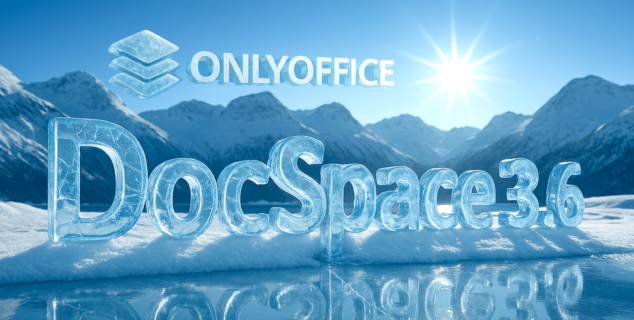Best CMS Platforms in 2025: The most popular Content Management Systems today
Choosing the right Content Management System (CMS) is one of the most critical decisions when building and maintaining a modern website. Whether you’re creating a blog, an eCommerce store, a corporate portal, or a digital portfolio, the best CMS platforms in 2025 offer powerful features, customization options, and user-friendly interfaces.
In this article, we compare the best Content Management Systems to help you find the one that suits your needs.

What is a Content Management System (CMS)?
A Content Management System, or CMS, is a software application that allows users to create, edit, manage, and publish digital content—especially for websites—without requiring advanced technical skills. Instead of writing code manually, users can rely on a visual interface and built-in tools to handle various aspects of content creation and website management.
CMS platforms typically offer a range of features designed to make the process of building and maintaining a website easier. These often include pre-designed templates, WYSIWYG (What You See Is What You Get) editors, media management tools, customizable themes, and modules or plugins to extend functionality. Users can easily update content, add new pages, upload images and videos, and make design adjustments all from a centralized dashboard.
By simplifying complex tasks, a CMS enables individuals, businesses, and organizations to maintain a consistent online presence, collaborate more effectively, and focus on delivering valuable content rather than dealing with the underlying code or infrastructure.
Top CMS platforms in 2025
Here are some of the best CMS platforms in 2025, including both traditional and headless solutions, as well as new players that are making a strong impact.
1. WordPress

WordPress remains a leading content management system in 2025, continuing to be widely used around the world. With over two decades of development behind it, WordPress has matured into a highly versatile and reliable platform that caters to a wide range of users—from individual bloggers and small business owners to large enterprises and media organizations. As an open-source project, WordPress benefits from a massive global community of developers, designers, and contributors who constantly work to improve the core platform, extend its functionality, and ensure it remains secure, modern, and adaptable.
One of WordPress’s greatest strengths lies in its flexibility. With over 60,000 plugins and thousands of themes available in its official repository—and countless more offered by third-party developers—users can customize nearly every aspect of their website without needing to write a single line of code. Themes range from minimalist designs for personal blogs to advanced templates tailored for news sites, portfolios, e-learning platforms, and more.
WordPress is also known for its user-friendly interface, making it accessible to non-technical users while still offering deep customization options for developers. Developers can further extend functionality using PHP, JavaScript, and REST API integrations, making WordPress an ideal choice for both no-code and custom-coded projects alike. Multilingual support, media management, scheduling, and role-based permissions are built in, making it a solid foundation for websites of any scale.
WordPress remains a good choice for those seeking a dependable, adaptable, and future-proof solution for web publishing and digital content management.
Pros:
- Huge community and extensive documentation
- Thousands of themes and plugins
- SEO-friendly and highly customizable
- Integration with ONLYOFFICE DocSpace
Cons:
- Sometimes bloated with plugins
- Requires ongoing maintenance and updates
Best for: Bloggers, small to medium businesses, and users who need extensive customization.
2. Joomla

Joomla is a well-established open-source CMS that strikes a balance between ease of use and powerful customization options. It has evolved into a flexible and secure platform suited for websites of all sizes—from small business sites and non-profits to corporate portals and government services. What sets Joomla apart is its native support for multilingual content, advanced user permissions, and a robust templating system that allows for extensive front-end customization without sacrificing performance or accessibility.
Although it may not be as beginner-friendly as others, Joomla offers a more structured and feature-rich experience. Its powerful extensions ecosystem and active developer community help users extend site functionality, while built-in SEO settings, menu management, and caching options make it easier to optimize performance and visibility. Developers also appreciate Joomla’s Model-View-Controller (MVC) architecture, which promotes cleaner code and easier maintenance for complex projects.
With strong security features, granular content control, and a focus on scalability, Joomla remains a relevant and reliable CMS choice especially for teams looking for a middle ground between simplicity and development flexibility.
Pros:
- Native multilingual support
- Granular user and permission management
- Strong templating and layout options
Cons:
- Steeper learning curve for beginners
Best for: Medium to large websites needing multilingual content and strong access control.
3. Drupal

Drupal is the heavyweight content management system (CMS) specifically engineered for building complex websites and content-rich digital platforms. Unlike more beginner-friendly options, Drupal is tailored to users and organizations that possess a higher level of technical expertise, such as developers, IT teams, and digital agencies. However, this steeper learning curve comes with significant advantages—Drupal delivers unmatched power, customization capabilities, and scalability.
It’s a good choice for institutions that demand precision and control, including government agencies, universities, healthcare organizations, and large enterprises. These entities rely on Drupal for its robust content governance features, advanced user role management, and ability to handle intricate content hierarchies. Its modular architecture allows developers to extend and adapt the platform endlessly, with thousands of contributed modules available to enhance functionality.
Drupal also excels in multilingual support and accessibility compliance. Furthermore, it adheres to strict security standards and benefits from an active developer community that regularly audits and updates the core for vulnerabilities. Whether you’re building a digital experience platform, an enterprise-grade intranet, or a high-traffic public website, Drupal provides the secure foundation and development flexibility necessary to support long-term growth and innovation.
Pros:
- Highly flexible and scalable
- Strong user roles and permission control
- Excellent for complex content structures
- Integration with ONLYOFFICE DocSpace
Cons:
- Steeper learning curve
- Requires technical knowledge for customization
Best for: Enterprise-level websites, government portals, and developers looking for advanced customization.
4. Strapi

Strapi is an open-source headless content management system (CMS) designed to offer flexibility and control to developers. Unlike traditional CMS platforms that bundle both the backend and frontend together, Strapi separates the content management layer from the presentation layer. This headless architecture empowers developers to build frontends using any technology stack they prefer—whether it’s React, Vue.js, Angular, Svelte, or even native mobile frameworks like React Native or Flutter. Strapi provides a robust and extensible backend where content is created, structured, and managed, all through a modern and intuitive admin panel that’s both powerful and user-friendly.
Although Strapi is primarily geared toward developers, it also caters to content teams and business users. The user interface is clean, responsive, and highly customizable, making it accessible even for non-technical contributors who need to create, edit, or manage content. Role-based access control, content versioning, and internationalization features make it a comprehensive tool for teams of all sizes, from startups to large enterprises. With its plugin system and active open-source community, Strapi continues to evolve rapidly, providing new features and integrations that meet the diverse needs of modern web and app development.
Pros:
- Headless by design, perfect for decoupled frontends
- Supports REST and GraphQL APIs
- Custom content types and roles
Cons:
- Requires backend development skills
- Smaller community compared to WordPress
Best for: Developers building JAMstack or headless websites.
5. Webflow

Webflow is a powerful and innovative web design platform that seamlessly bridges the gap between visual design and front-end development. It provides a fully integrated, browser-based environment where users can design, build, and launch responsive websites without needing to write a single line of code—though developers can still inject custom code when needed. With its unique combination of design flexibility and robust development capabilities, Webflow empowers users to turn high-fidelity prototypes into production-ready websites, eliminating the traditional handoff between designers and developers. It functions as a visual development tool, a content management system (CMS), and a hosting provider—all rolled into one streamlined platform.
One of Webflow’s standout features is its visually intuitive editor, which enables designers to build pixel-perfect, fully responsive websites by manipulating HTML, CSS, and JavaScript through a drag-and-drop interface. Behind the scenes, Webflow generates clean, semantic code, giving developers and agencies confidence in the performance and maintainability of their projects. This makes it an especially popular choice among creative professionals, digital agencies, freelancers, and marketing teams who want to retain design precision while accelerating the development process. For teams focused on rapid prototyping or iterative design, Webflow significantly reduces time-to-market without compromising quality.
Beyond visual design, Webflow includes a dynamic CMS that allows users to create and manage content collections with custom fields, filters, and reference types. Whether you’re building a blog, a portfolio site, or an e-commerce storefront, Webflow gives you the tools to define your content structure and populate it through a user-friendly interface. Animations and interactions can be added with ease using a visual timeline, allowing for rich, engaging user experiences. SEO optimization is also built-in, with customizable meta tags, alt attributes, and clean URLs to ensure websites are search engine-friendly from the start.
Pros:
- Drag-and-drop interface with CMS functionality
- Hosting included
- Great for design-focused teams
Cons:
- Pricing can be high for advanced features
- Not fully open-source
Best for: Designers and marketers who want full control over design and content.
6. Ghost

Ghost is a modern, open-source CMS purpose-built for writers, journalists, and publishers who prioritize clean design, performance, and a focused content creation experience. From the ground up, Ghost was designed to eliminate the clutter and complexity found in more generalized CMS platforms, offering instead a streamlined, distraction-free interface that lets authors concentrate on what they do best—writing.
One of Ghost’s biggest advantages is its emphasis on speed and simplicity. Whether you’re hosting a high-traffic blog, a niche publication, or a content-driven landing page, Ghost delivers fast load times and a snappy backend interface.
But Ghost is more than just a publishing tool—it’s also a powerful platform for building a sustainable business around content. With built-in features for memberships, subscriptions, and email newsletters, Ghost allows creators to monetize their work without relying on third-party plugins or external services. You can create premium content for paying subscribers, manage member lists, and send out custom newsletters directly from the admin panel. This makes Ghost a popular choice among independent publishers, creators, and digital entrepreneurs looking to build a loyal audience and generate recurring revenue from their writing.
While Ghost doesn’t offer the vast plugins and themes, it compensates with a focused feature set that covers most needs out of the box. The platform also supports custom themes and integrations via its API, offering enough flexibility for developers to extend its functionality where needed.
Pros:
- Clean writing and publishing experience
- Built-in SEO and membership features
- Fast and lightweight
Cons:
- Limited to blogging and content publishing
- Fewer themes and integrations
Best for: Bloggers, online publishers, and content creators.
From content to collaboration: Connect ONLYOFFICE DocSpace with your favorite CMS
ONLYOFFICE DocSpace is not a CMS, but a powerful collaborative suite that can be integrated with Content Management Systems to make document-driven workflows smoother. Tailored to meet the needs of teams and organizations that work extensively with digital documents, DocSpace combines robust functionality with an intuitive user experience.
Built with both security and productivity at its core, it provides a centralized platform where users can co-edit documents, store files securely, and manage content efficiently within a structured, permission-based environment.
One of the standout features of DocSpace is its use of customizable rooms, which allow teams to organize their workflows according to specific projects, departments, or clients. Each room can be configured with unique access permissions, ensuring that the right people have the appropriate level of control over documents—whether it’s viewing, editing, or managing access. Version control tools make it easy to track changes, restore previous versions, and maintain a clear history of document activity.

In addition to real-time co-editing with multiple users, DocSpace supports commenting, document sharing via public links, and role-based collaboration to enhance communication and transparency. It’s particularly well-suited for businesses, educational institutions, and government organizations that require both flexibility and strict data governance.

What sets ONLYOFFICE DocSpace apart is its seamless integration with widely used CMS platforms such as WordPress and Drupal. This means you can enhance your existing content ecosystem by embedding advanced document collaboration capabilities directly into your current workflows, without disrupting your established processes. Whether you’re managing website content or internal documents, DocSpace brings enhanced document control, collaboration, and efficiency to any content management strategy.
Summary
When it comes to choosing the best CMS platform in 2025, there’s no one-size-fits-all solution. Each content management system offers unique features and advantages:
- Choose WordPress for flexibility and a wide range of plugins.
- Pick Joomla for multilingual support and advanced user management.
- Opt for Drupal if you need robust security and customizability.
- Use Strapi for API-first, headless projects.
- Try Webflow for visually appealing designs.
- Go with Ghost if your focus is on blogging.
Tip: Enhance your CMS with complementary platforms like ONLYOFFICE DocSpace to streamline document-based workflows. By adding collaborative editing, granular access controls, and built-in version history, you can create a more efficient and secure content management environment—especially useful for teams handling internal documents, publications, or client deliverables.
Create your free ONLYOFFICE account
View, edit and collaborate on docs, sheets, slides, forms, and PDF files online.


